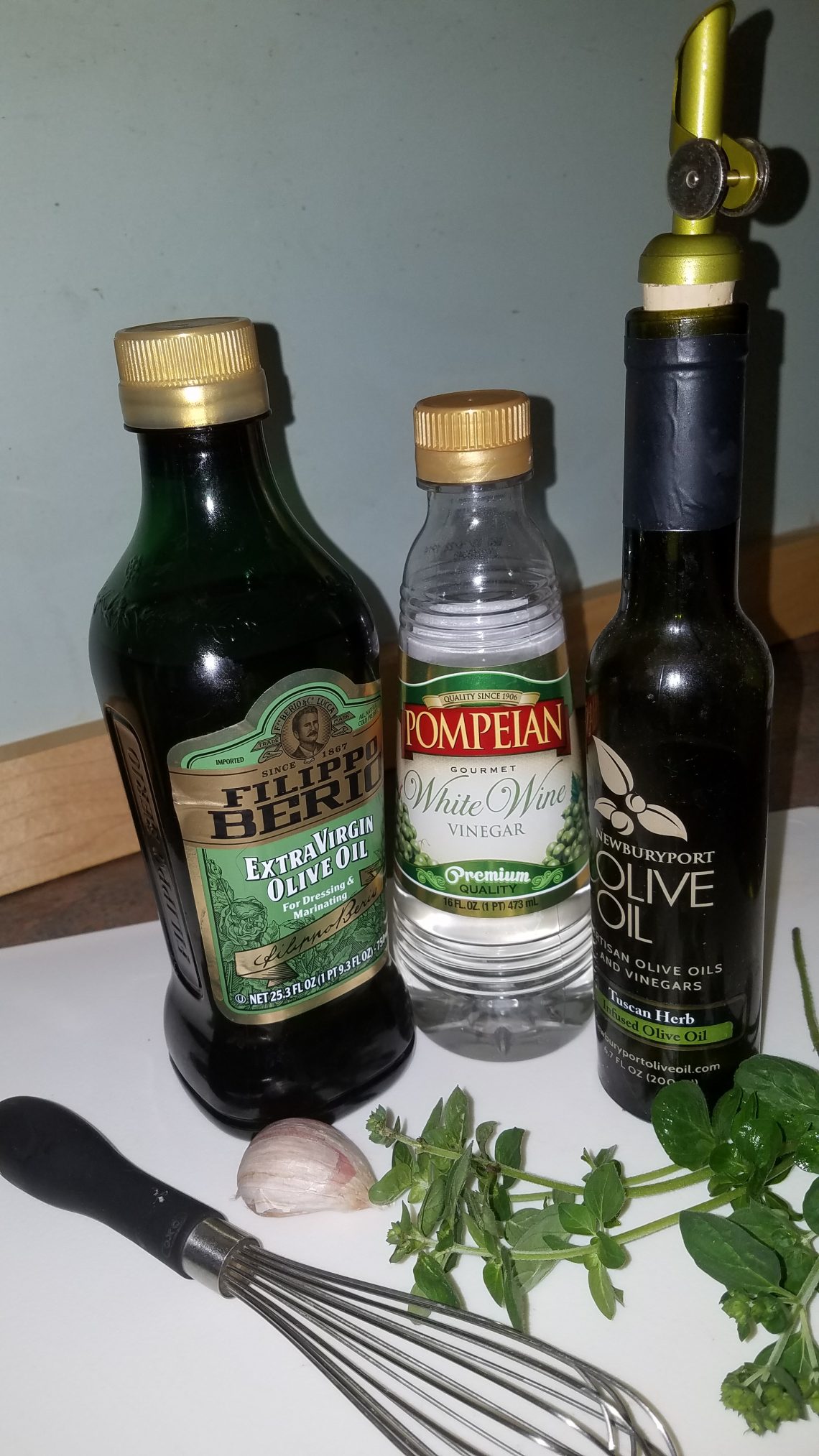
Undressing Your Salad Dressing
Warm weather means salads, and salads typically need dressing. Most grocery stores have a large portion of shelf space devoted to a premade liquid dressings, which may well end up populating the back of your refrigerator shelf before becoming a science project.
It’s a long way from my youth, when salad dressing meant acquiring the Good Seasons cruet into which the salad-maker deposited the contents of the dry Good Seasons Italian Dressing mix, then added appropriate amounts of cider vinegar, olive oil, and water before shaking the cruet and pouring the dressing onto iceberg lettuce. It wasn’t great, but it was convenient.
These days, it’s just as easy and much less expensive to make your own dressing. It’s fresh, it tastes better, and you can create a specific flavor profile with every salad. Plus, you’re not ingesting the extra sugar, preservatives, salt, xantham gum, and malto dextrin used for preservative and thickener. Yuk.
Basic vinaigrette
I prefer a basic vinaigrette of oil and vinegar or lemon juice. A good extra-virgin olive oil makes the best vinaigrette. Most recipes call for red wine vinegar, which you probably have in your kitchen. The typical ratio is three parts oil to one part vinegar, but that can vary with the intensity of the vinegar. And most simple vinaigrettes include a bit of chopped shallots, garlic, anchovies, herbs, and a dab of Dijon mustard for a more complex flavor. Depending on what else is going into my salad, I’ll sometime whisk in a little maple syrup or honey to balance out the acid. Mrs. Farmboy sometimes whisks a spoonful or two of mayonnaise into the vinaigrette to thicken. Don’t forget the salt and pepper.
Vinegar and oil varieties
You can mix things up by switching vinegars – a sherry vinegar or a white wine vinegar is a little more mellow. Balsamic vinegars will yield a bold and sweeter dressing, and are special complements if you’re adding peaches, strawberries, or other fruit to your salad. You can also experiment with champagne vinegar, which is light, mild, and slightly sweet, or a tart cider vinegar. Then there are flavored oils: basil oil, lemon oil, truffle oil, walnut oil – knock yourself out. I recommend whisking a little bit of the flavored oil in with the plain olive oil to taste, rather than using 100% flavored oils, which can be overpowering.
Make-your-own Roquefort dressing
There’s no need to miss out on Roquefort dressing, if that’s your favorite. Just pick up a 3-ounce wedge of Roquefort or bleu cheese at the grocery store. Whisk until smooth a cup of mayonnaise, ¼ cup of buttermilk (or sour cream or yogurt), a teaspoon of lemon juice, and a dash of Worcestershire sauce. Stir in the cheese, and voila. It’s even easier if you have a food processor.
Since we have an herb garden, we make excellent use of it with a five-minute Green Goddess Dressing, which also serves as a tasty dip for crudités or crackers.
What about you? Do you have your own home-made dressing? Care to share?




